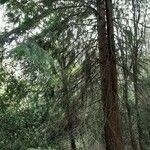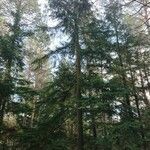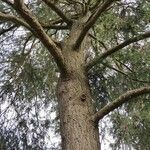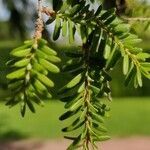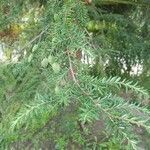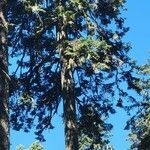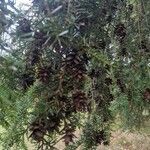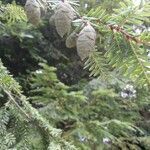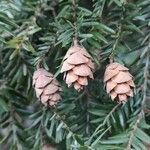Trees to 50m; trunk to diam.; crown narrowly conic. Bark gray-brown, scaly and moderately fissured. Twigs yellow-brown, finely pubescent. Buds ovoid, gray-brown, 2.5--3.5mm. Leaves (5--)10--20(--30)mm, mostly appearing 2-ranked, flattened; abaxial surface glaucous with 2 broad, conspicuous stomatal bands, adaxial surface shiny green (yellow-green); margins minutely dentate. Seed cones ovoid, (1--)1.5--2.5(--3) ´ 1--2.5cm; scales ovate, 8--15 ´ 6--10mm, apex round to pointed. 2 n =24.
